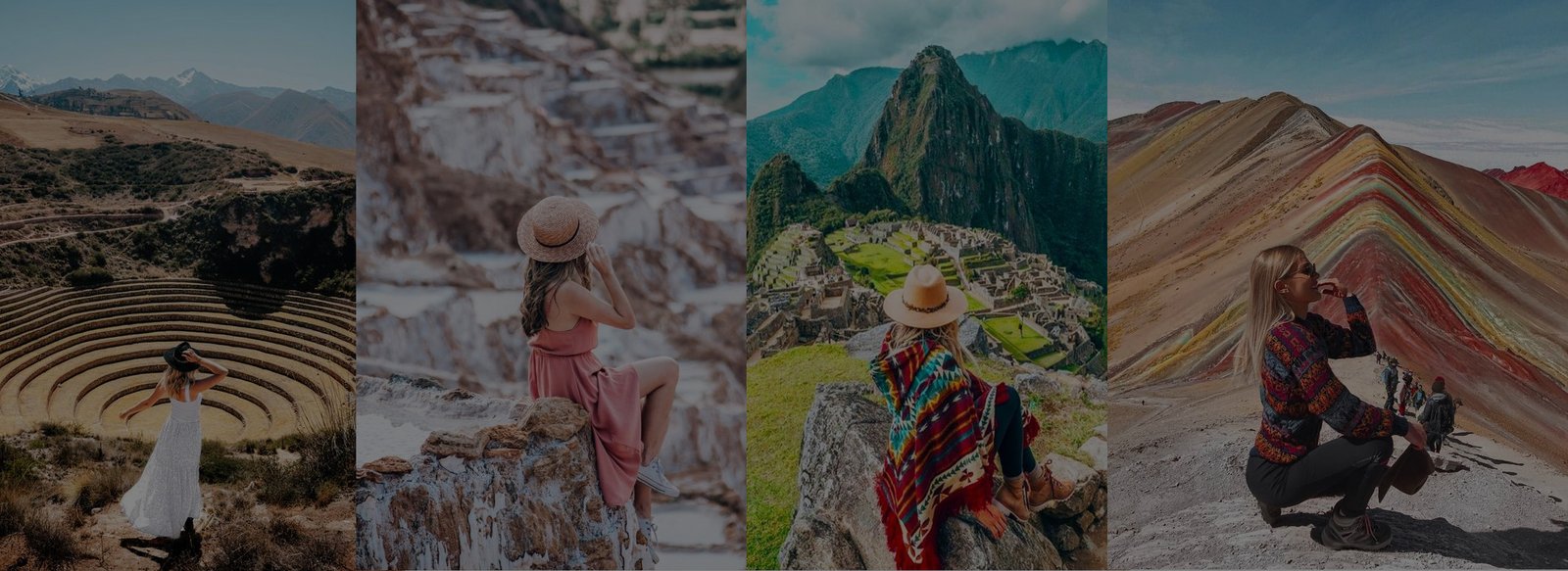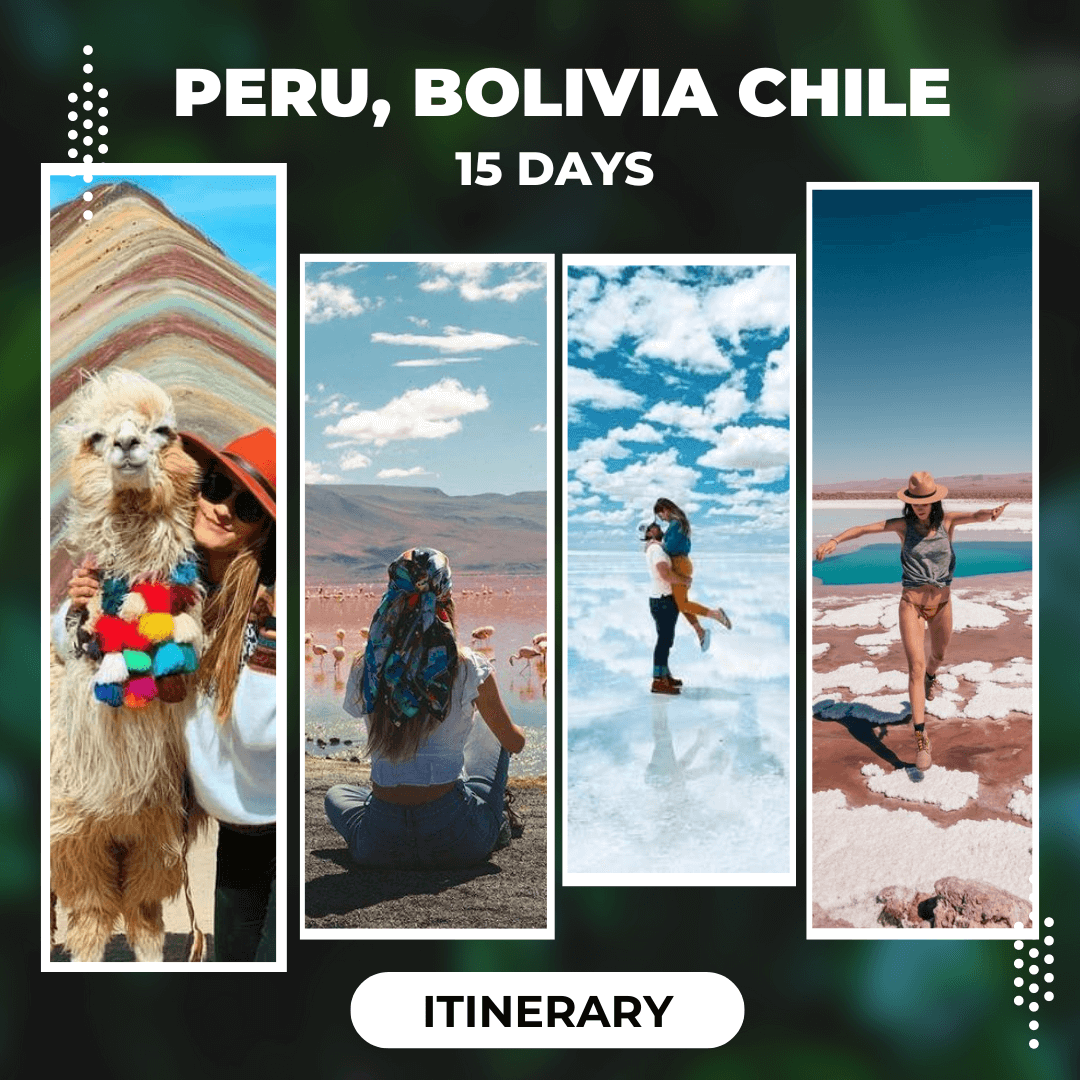
Hydration on the Salkantay Trek: How Much Water Do You Need?
Embark on the adventure of a lifetime with the confidence of knowing how to properly manage hydration on the Salkantay Trek. This majestic journey through the Andes not only tests your physical endurance but also your ability to keep your body properly hydrated. You will learn to calculate the amount of water you will need, considering the altitude and physical exertion, to fully enjoy the natural beauty of this route without compromising your health.
How Much Water Should I Carry During the Salkantay Trek?

Completing the Salkantay Trek 4 Days is an impressive and challenging experience. One of the keys to fully enjoying this adventure and ensuring you complete it successfully is to maintain good hydration on the Salkantay Trek. Here, we will explain how much water you need to carry and how to manage your fluid intake during the trek.
Importance of Hydration on the Salkantay Trek
The Salkantay Trek takes you through varied climates and altitudes, where the body loses water faster than usual due to physical exertion and altitude. At higher altitudes, the air is colder and drier; we breathe faster and lose more moisture through breathing. Additionally, sweat evaporates quickly, which can make you unaware of how much water you are losing. Therefore, maintaining adequate hydration on the Salkantay Trek is vital to avoid dehydration, altitude sickness, and other health issues.
How Much Water to Carry?
Recommended Amount
The amount of water needed can vary depending on your walking pace, the weather, and your personal response to altitude. However, a general rule is to drink between 2 to 3 liters of water per day. It is advisable to start the trek each day with at least 2 liters of water in your backpack. Additionally, you should take advantage of any safe water source to refill your bottles or hydration systems along the way.
Water Refill Points
Throughout the Salkantay Trek, you will find several points where you can refill your water bottles. These points are usually campsites or lodges that offer filtered or boiled water. It is essential to only refill your bottle at these reliable points to avoid consuming water that may be contaminated.
Tips for Maintaining Good Hydration
Drink Water Regularly: Do not wait until you are thirsty to drink water; thirst is a late sign of dehydration. Drink small amounts of water frequently from the beginning to the end of the day.
Use Isotonic Drinks: Occasionally, supplement your water intake with isotonic drinks. These can help replenish lost electrolytes through sweat, especially during the most intense days of the trek.
Avoid Alcohol and Caffeine: These substances can contribute to dehydration. Avoid them or consume them in moderation.
Listen to Your Body: Increase your water intake if you experience dehydration symptoms, such as dry mouth, tiredness, or headache.
Maintaining proper hydration on the Salkantay Trek will not only help you avoid health problems but will also allow you to enjoy the landscape and the overall experience more fully. Remember that everyone is different, so adjust these recommendations to your specific needs and consult with a healthcare professional if you have particular conditions.
What factors determine the amount of water needed for the Trek?

When planning an adventure like the Salkantay Trek 5 Days, one of the most important questions is: how much water do I need to carry? Hydration on the Salkantay Trek is crucial, and several factors influence how much water you should bring with you. Let’s explore these factors so you can be well-prepared.
Key Factors Affecting Your Water Needs
Duration and Difficulty of the Trek
The Salkantay Trek is typically completed in 5 days, traversing different types of terrain, from mountainous paths to tropical jungles. As the difficulty of the trail and the time exposed to the sun increase, your body requires more water to stay hydrated and function optimally.
Weather Conditions
The weather plays a crucial role in the amount of water you should carry. If trekking under the sun and in warm weather, your body tends to lose more water through sweat. In contrast, colder or rainy days may slightly decrease that need, but they do not eliminate it, as proper hydration remains essential to avoid hypothermia and other cold-related risks.
Altitude
The Salkantay Trek reaches altitudes of up to 4,600 meters above sea level. At higher altitudes, the air becomes colder and drier, and your body accelerates water loss through breathing. Additionally, the effort required to move at high altitudes increases sweating, which in turn increases the need for water.
Your Level of Physical Activity
The more intense the physical effort, the greater the loss of fluids through sweat. Your walking speed and the amount of gear you carry also affect how much you need to hydrate. A faster pace and a heavy backpack may require more water to maintain adequate hydration on the Salkantay Trek.
Your Personal Needs
Each person is unique in how their body regulates and uses water. Factors such as body weight, age, sex, and overall physical condition, as well as personal adaptation to altitude, can influence how much water you need to consume.
Tips for Managing Hydration
To ensure you handle hydration well on the Salkantay Trek, consider these tips:
Regularly Monitor Your Hydration: Pay attention to signs of dehydration, including fatigue, dizziness, and decreased urination frequency.
Plan According to Weather and Altitude: Adjust the amount of water you carry each day based on weather forecasts and expected altitude changes.
Use Reliable Water Sources: Make sure to refill your supplies at safe, treated water points to avoid illnesses.
Understanding these factors will help you better plan your adventure and ensure that hydration on the Salkantay Trek is not a hindrance to enjoying this incredible experience.
How does altitude affect your hydration needs on the Salkantay Trek?

Ascending the majestic Salkantay Trek 6 Days is a transformative experience that also poses serious physical challenges, especially related to altitude. One of the most crucial aspects of effectively managing these challenges is understanding how altitude impacts your hydration.
Understanding the Effect of Altitude on Hydration
Cold and Dry Air
As we ascend on the Salkantay Trek, the air becomes colder and much drier. At high altitudes, the low atmospheric pressure causes the air to contain less oxygen and moisture compared to sea level. This condition causes faster and deeper breathing to capture more oxygen, which increases water loss through exhaled vapor. Therefore, hydration on the Salkantay Trek must be meticulously planned.
Increased Fluid Loss
The physical effort of walking on steep and rocky trails increases sweating, which is your body’s natural cooling mechanism. However, at high altitudes, not only do you sweat more, but the sweat evaporates quickly due to dry air, which can deceive you into thinking you are not losing much fluid. This rapid evaporation can lead to underestimating the amount of water you need, compromising your hydration on the Salkantay Trek.
Risk of Dehydration and Altitude Sickness
The combination of accelerated fluid loss and lower water intake can quickly lead to dehydration. This is particularly dangerous at high altitudes where altitude sickness is a serious concern. Dehydration contributes to altitude sickness symptoms, including headaches, nausea, and extreme fatigue. Maintaining adequate hydration on the Salkantay Trek is crucial to mitigate these risks and ensure your well-being during the hike.
Strategies for Maintaining Hydration at High Altitudes
Increase Your Fluid Intake: Drink between 3 to 4 liters of water daily while trekking, and start hydrating days before starting the trek.
Drink at Regular Intervals: Consume liquids regularly, not just when you are thirsty. Thirst is a late indicator of dehydration.
Use Isotonic Drinks: These can help replenish electrolytes lost in sweat and improve fluid absorption in your body.
Avoid Diuretics: Beverages such as coffee and alcohol increase urine production and can accelerate fluid loss.
Are there risks of dehydration on the Salkantay Trek?

The Salkantay Trek is one of Peru’s most fascinating and challenging hiking routes, leading adventurers through landscapes ranging from snowy mountains to tropical jungles. A crucial aspect of completing this trek successfully and enjoying the experience is properly managing hydration on the Salkantay Trek. Yes, there are significant risks of dehydration, and it is vital to be well-prepared to face them.
Factors Increasing the Risk of Dehydration
High Altitude
At higher altitudes, such as those found in various parts of the Salkantay Trek, the human body tends to lose moisture more quickly. This is due to both low atmospheric pressure, which causes us to breathe faster and deeper, and cold, dry air, which does not effectively retain moisture. These conditions increase water loss through breathing and sweating, intensifying the need for adequate hydration on the Salkantay Trek.
Intense Physical Effort
Constant trekking on varied and often steep terrain requires a high level of physical effort. This effort not only consumes energy but also water, as the body sweats to try to cool down. If you do not replenish fluids properly, you could quickly find yourself dehydrated.
Variable Climate
The weather on the Salkantay Trek can change abruptly. You can start your day under intense sun and end it in rain or snow. Each of these climatic extremes poses its own risks of dehydration, either through excessive sweating or by not feeling the need to drink due to the cold.
Strategies to Prevent Dehydration
Constant Monitoring of Water Needs
It is crucial to drink water regularly, not just when you are thirsty. Thirst is a late indicator of dehydration, and in a high-altitude environment, you may need water before your body clearly indicates it to you.
Altitude Adaptation
Acclimatizing to the altitude before starting the full trek can help your body adjust to losing water more quickly. This can be as simple as spending several days in a high-altitude area before starting the trek.
Use of Isotonic Drinks
Alternating water with isotonic drinks can help replenish electrolytes lost through sweat, which is vital for maintaining muscle and nerve function, especially during prolonged exercises like those performed on the trek.
How to Purify Water Found During the Salkantay Trek?

Finding and purifying water is a vital aspect of maintaining proper hydration on the Salkantay Trek. Because natural water sources can be contaminated with pathogens that cause illness, it is crucial to know how to treat water correctly before consuming it.
Water Purification Methods
Boiling Water
How It Works: Boiling is one of the safest and simplest methods for purifying water. The extreme heat kills microorganisms present in the water, including viruses, bacteria, and protozoa.
Procedure: Bring the water to a full boil and maintain it for at least one minute at low altitudes, and at least three minutes if you are above 2,000 meters above sea level, due to the variation in the boiling point of water with altitude.
Using Purification Tablets
How It Works: Purification tablets, commonly made of iodine or chlorine, are an effective and lightweight method for disinfecting water. These chemicals deactivate bacteria, viruses, and most protozoa.
Procedure: Add the tablet to the water according to the package instructions (usually one tablet per liter of water). Let the water stand for the specified time, which can vary from 30 minutes to a couple of hours depending on the product.
Water Filters
How It Works: Water filters are devices that remove contaminants by passing water through physical mediums that may include activated carbon or microfiltration membranes. They are effective against protozoa and bacteria but not always against viruses.
Procedure: Fill the device with water and press or suck it through the filter according to the manufacturer’s instructions. Make sure to clean or replace the filter as recommended to maintain its effectiveness.
Portable UV Lamps
How It Works: Ultraviolet light can inactivate all major biological contaminants in water, including viruses, which are smaller and harder to filter.
Procedure: Clarify the water as much as possible before using the UV lamp. Then, turn on the lamp and swirl the water with it according to the manufacturer’s instructions, usually for a minute or more.
Ready to embark on the adventure of a lifetime? At Machupicchu Travel Tour, we are experts in designing tailor-made tour packages that will transform the way you travel. Our local knowledge and attention to detail guarantee that your Sacred Valley trekking experience will be unforgettable. We are not only your best choice, we are your ultimate travel partner.
Don’t wait any longer! Follow us on Instagram to see our clients’ exciting adventures and join our community on Facebook for the latest news and special offers. Live the adventure, live Leading Travel.
With Machupicchu Travel Tour, every step you take to new heights is filled with the promise of wonder, learning and, of course, fun. Let us make your next great trip a reality!

